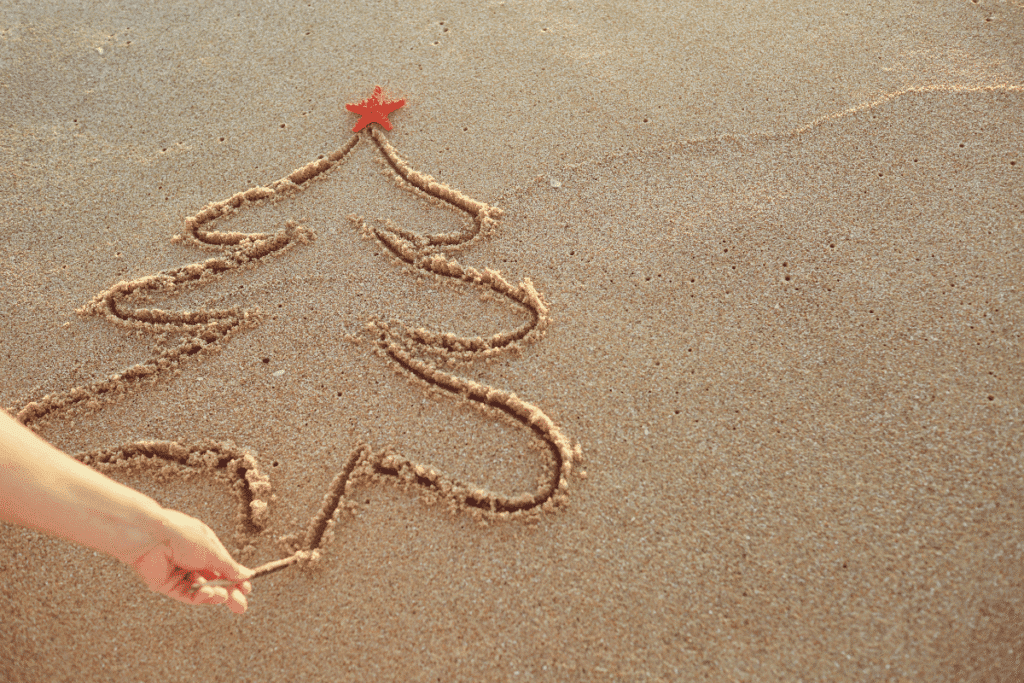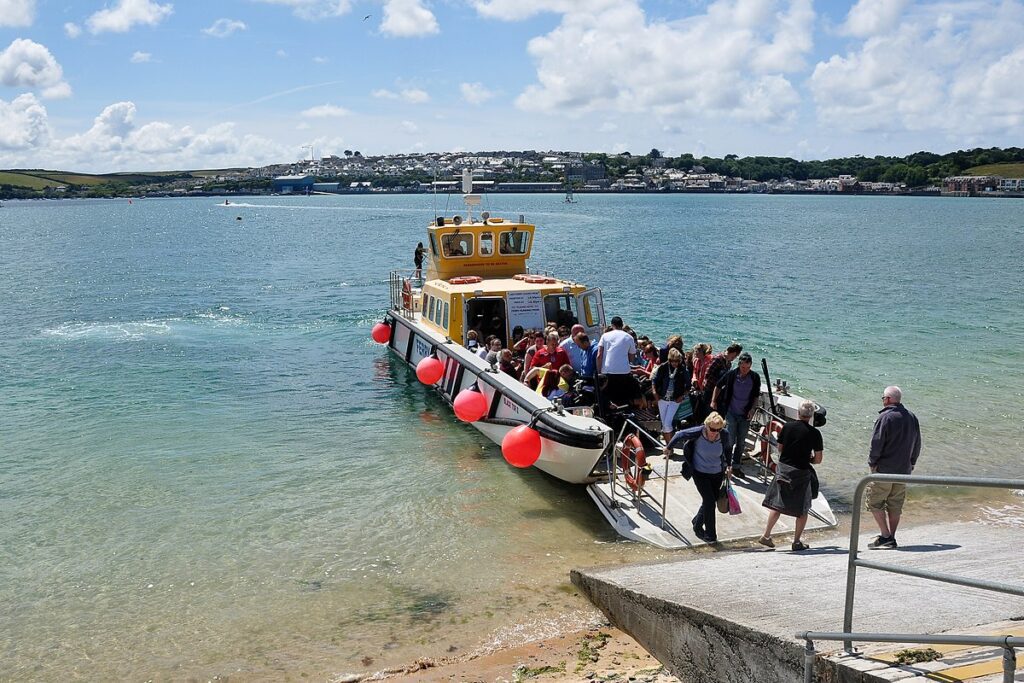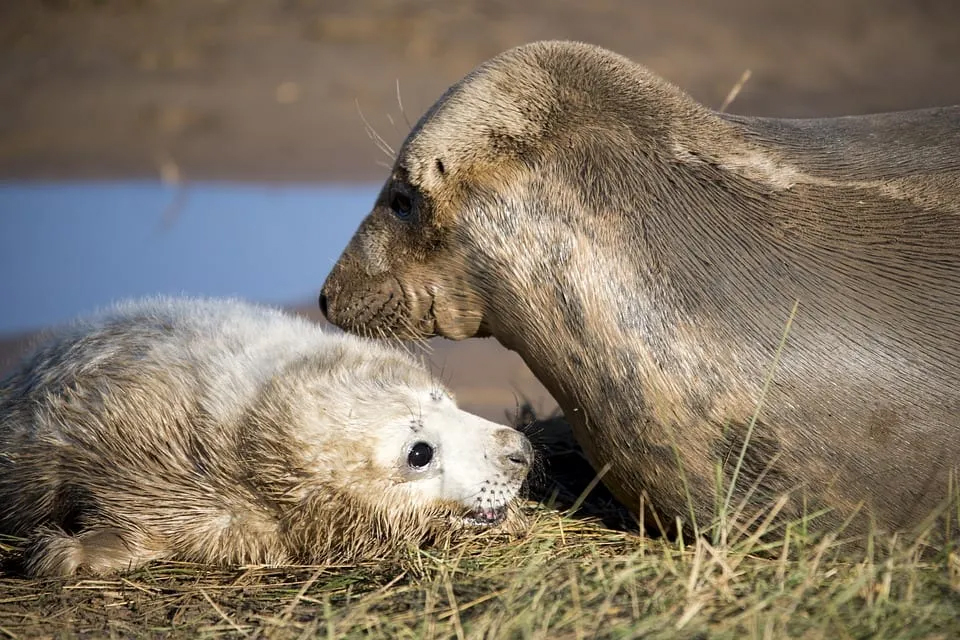Every year, marine animal migration transforms Cornwall’s coastline into a haven for wildlife enthusiasts. From the majestic humpback whale travelling thousands of miles to breed, to the arrival of basking sharks gliding through our waters in summer, these seasonal movements reveal the incredible journeys marine species undertake.
Our unique position on the Atlantic makes Cornwall a vital stopover and feeding ground, offering visitors a front-row seat to one of nature’s most captivating spectacles.

Understanding Marine Migration in Cornish Waters
To gain a greater understanding of the incredible world of marine animal migrations, we first need to uncover how and why these creatures move, the challenges they face, and the secrets scientists are still uncovering beneath the waves.
What Drives Marine Animals to Migrate?
Marine animals migrate for a variety of reasons, often driven by survival and reproduction. Some species, such as whales and sea turtles, migrate long distances to reach warmer tropical waters where they can breed and give birth.
Others, such as certain fish and plankton, follow seasonal shifts in water temperature and food availability. In many cases, migration helps animals find the best conditions for feeding, mating, or avoiding predators.
Environmental cues like ocean currents, day length, and even the Earth’s magnetic field can guide these journeys, making marine animal migration one of the most complex and fascinating behaviours in the animal kingdom.
Cornwall’s Strategic Position on Migration Routes
Cornwall’s rugged coastline and surrounding waters serve as a vital crossroads for numerous marine species.
The English Channel and Celtic Sea, adjacent to Cornwall, are frequented by migratory animals such as basking sharks and various cetaceans. These waters offer essential feeding and breeding grounds, making Cornwall a critical area for marine biodiversity. Recognising this importance, Cornwall has designated several Marine Conservation Zones, including the South-West Deeps, to protect these habitats and the species that rely on them.
Such strategic positioning underscores Cornwall’s role in supporting and sustaining marine animal migrations.
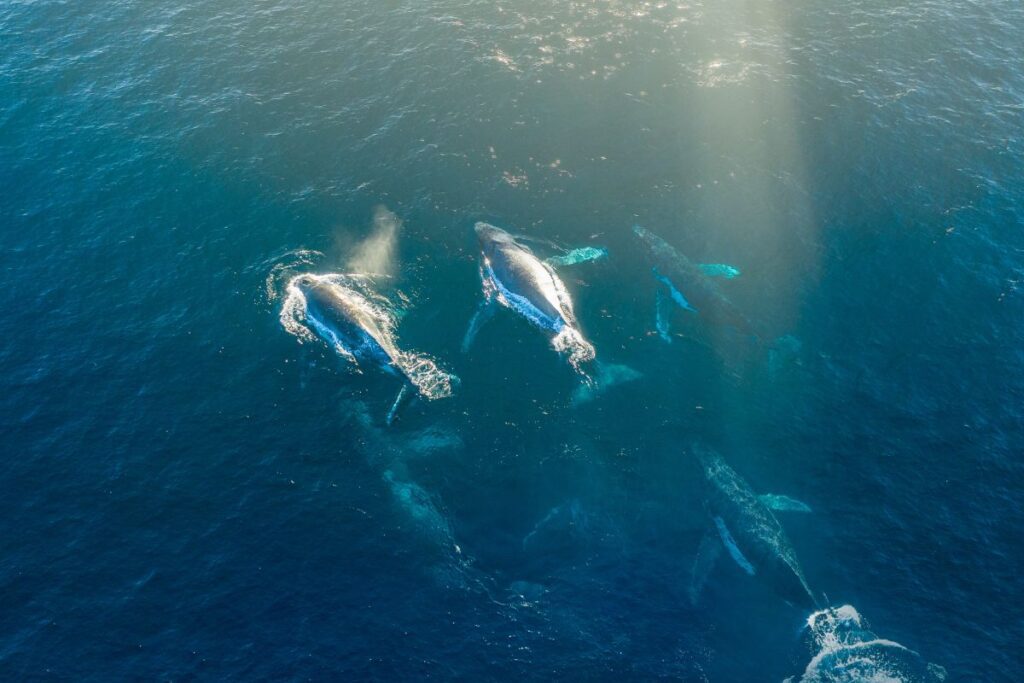
Key Marine Species That Migrate Past Cornwall
Cornwall’s waters are home to a changing cast of marine life throughout the year, with different species appearing as the seasons shift. Let’s take a closer look at the key marine species you might encounter around our coast, season by season. Cornwall offers spectacular opportunities to witness marine animal migrations throughout the year, but certain seasons stand out for their abundance and diversity. Planning visits around these seasonal windows increases your chances of unforgettable wildlife encounters along Cornwall’s coast.
Spring Visitors (March-May)
Each spring, Cornwall’s coastal waters become a busy corridor for a variety of migratory marine species. These seasonal visitors highlight the ecological importance of Cornwall’s waters during the spring migration window.
- Basking sharks, the world’s second-largest fish, begin to appear as they follow the plankton blooms brought by warming seas
- Harbour porpoises and common dolphins also become more visible, drawn by the abundance of fish
- Seabirds like Atlantic puffins, guillemots and razorbills breed on offshore islands
- Grey seals can be spotted hunting in the nutrient-rich waters.
- Even the elusive leatherback turtle has been recorded passing through, attracted by jellyfish blooms.
Summer Species (June-August)
From June to August, Cornwall’s coastal waters host a vibrant array of migratory marine life. These summer sightings highlight Cornwall as a vital hotspot for marine biodiversity and a fantastic place for wildlife enthusiasts to experience marine animal migration in action.
- Common dolphins form large, playful pods, often spotted riding boat wakes
- Minke whales may also be seen feeding in deeper waters
- Seabird activity is high too, with gannets and shearwaters either nesting or passing through on their migratory routes.
- Occasionally, ocean sunfish (mola mola) drift near the surface, drawn by seasonal jellyfish blooms.
Autumn Travellers (September-November)
Autumn marks a transitional period in Cornwall’s marine migration calendar, with many species on the move as the seasons shift. These months also bring sightings of rarer visitors blown off course by autumn storms, adding an element of surprise to wildlife watching around Cornwall’s shores.
- Grey seals become more active around coastal haul-out sites as the breeding season approaches
- Large numbers of seabirds such as gannets, kittiwakes, and auks begin their southward migrations. Manx shearwaters and storm petrels head back to their wintering grounds after breeding on offshore islands.
- Dolphins and porpoises may still be seen, often taking advantage of late-season fish shoals, and the occasional minke whale can linger into early autumn.
Winter Wildlife (December-February)
While winter may seem like a quieter time at sea, Cornwall’s coastal waters still play host to a number of fascinating marine visitors. Despite the colder weather, winter can offer some of the most dramatic and rewarding wildlife encounters for those braving the Cornish coast.
- Grey seals are at the heart of their breeding season, with pups born on remote beaches and rocky coves.
- Offshore, hardy seabirds like great northern divers, razorbills, and guillemots arrive from the Arctic and northern Europe to overwinter in the relatively milder waters around Cornwall
- Occasionally, large cetaceans such as fin whales or humpbacks may be spotted as they pass by on deep-water migration routes.
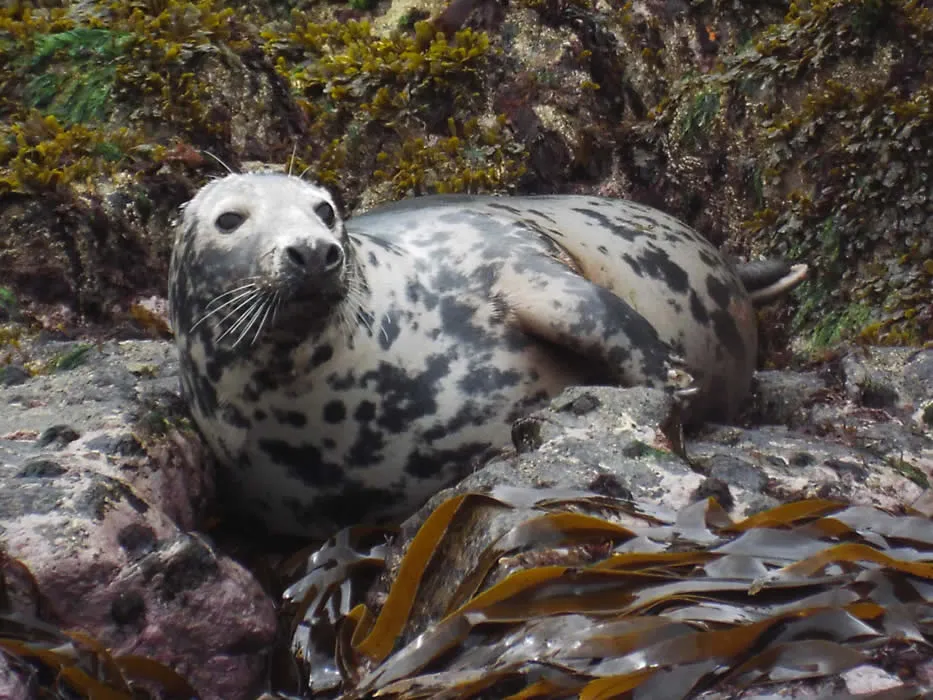
How to Observe Marine Animal Migration
Best Weather Conditions For Viewing Marine Animals
When it comes to observing migratory marine animals around Cornwall, weather and sea conditions play a crucial role. Calm, clear days with minimal wind and good sunlight offer the best visibility, making it easier to spot creatures like dolphins and whales, from both the shore and on a boat.
Rough seas, fog, or heavy rain can reduce visibility and make wildlife sightings more challenging and less safe for boat trips. Early mornings and late afternoons often provide calmer waters and softer light, ideal for watching marine life. Checking local weather forecasts and tide times before heading out can greatly improve the chances of a successful and enjoyable wildlife-spotting experience.
Tide Considerations
Tides significantly influence the behaviour and visibility of marine animals around Cornwall’s coastline. Many species take advantage of tidal movements to feed or rest, making certain tide phases better for wildlife watching.
For example, low tide can expose rock pools and coastal areas where seals haul out to rest, while incoming tides often bring fish closer to shore, attracting dolphins and seabirds as they search for food.
Strong tidal currents in areas like estuaries and headlands can concentrate prey, increasing the chances of spotting feeding marine animals. Planning your visit around tide tables can therefore enhance your wildlife viewing experience and help you catch the most active moments during marine animal migrations.
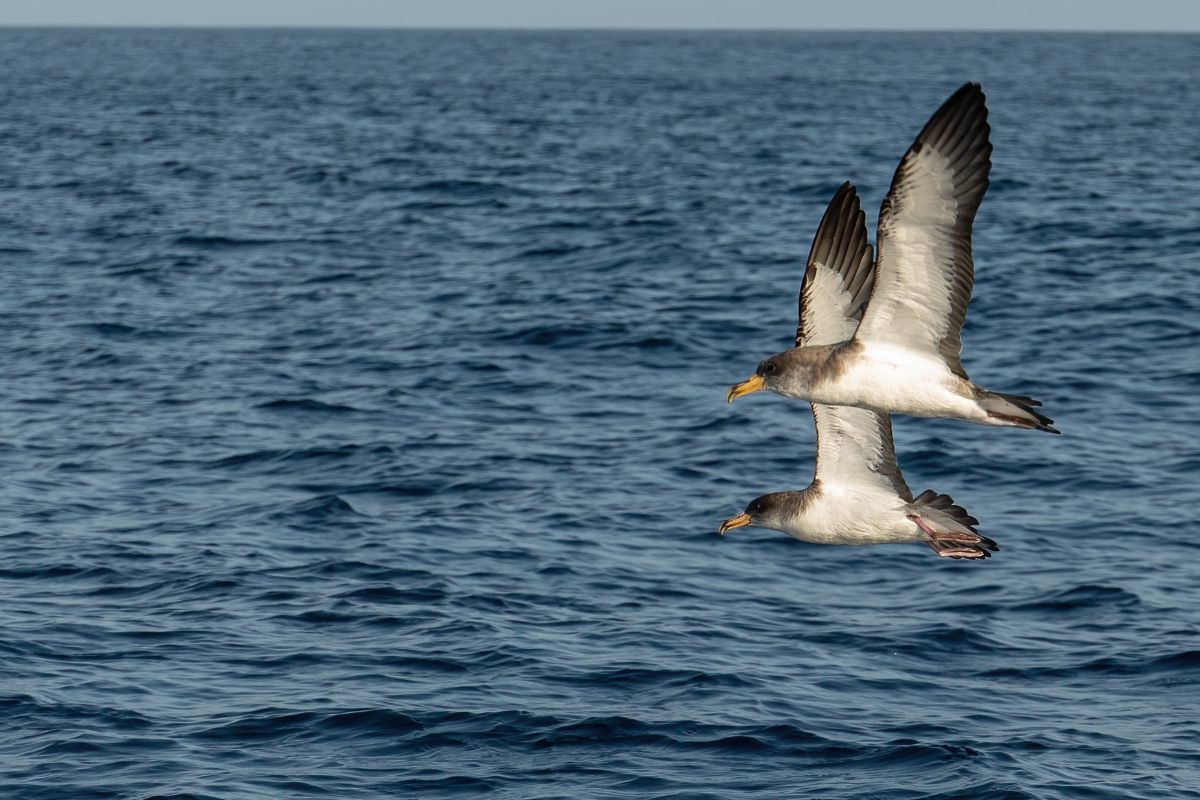
Notable Migration Hotspots Along the Cornish Coast
Padstow Bay
Padstow Bay plays an important role in the journeys of many migrating marine species. Its sheltered waters and rich feeding grounds make it a valuable stopover or seasonal habitat for animals on the move. Common dolphins and harbour porpoises are frequent visitors, especially during times of fish abundance.
The surrounding cliffs and headlands also attract migratory seabirds, many of which use the area to rest and feed before continuing their epic journeys. With its unique geography and productive marine environment, Padstow Bay is a key waypoint along Cornwall’s wider migration corridor. Padstow Bay is quickly becoming one of the best places to see whales in Cornwall.
The Celtic Deep
The South Celtic Deep, a deep-water channel off the coast of Cornwall, is a vital passageway for numerous migratory marine species. Its deep, nutrient-rich waters create an ideal environment for large marine animals like whales, dolphins, and sharks to travel through as they move between feeding and breeding grounds.
Many species, including humpback whales and basking sharks are known to use this corridor during their seasonal migrations. We have had many humpback whale sightings in Cornwall over the years, and our sightings have increased year-on-year over the last 5-6 years.
The depth and currents of the Celtic Deep support rich plankton blooms, which attract a diverse food chain, making it a hotspot for marine biodiversity. This area’s importance as a migration route underscores the need for continued monitoring and creating protected areas to ensure safe passage for these incredible creatures.
Trevose Head
Trevose Head is a prominent landmark that stands as a gateway for many marine species during their migratory journeys. Its strategic position at the meeting point of the Atlantic Ocean and the Celtic Sea creates nutrient-rich waters that attract a variety of marine animals.
During spring and summer, minke whales often pass by, drawn by abundant fish. Seabirds also use Trevose Head as a navigational reference and feeding stopover during their long annual migrations. The headland’s coastal cliffs provide essential nesting sites, making it an important ecological hotspot within Cornwall’s wider marine animal migration routes.
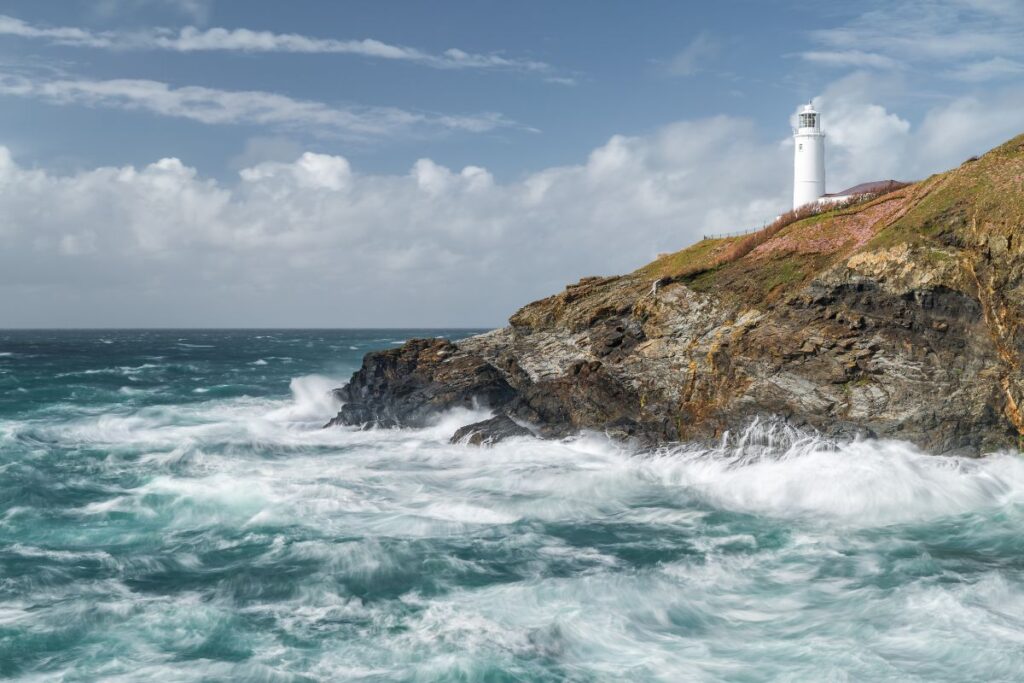
Conservation and Protection
Cornwall’s rich marine environment supports a wide variety of migratory species, many of which face increasing threats from habitat loss, pollution, and due to climate change.
To safeguard these animals and their critical migration routes, several Marine Conservation Zones (MCZs) have been established around the Cornish coast, offering protected habitats where wildlife can feed, breed, and rest with minimal disturbance.
Initiatives like the Cornwall and Isles of Scilly Marine and Coastal Partnership aim to enhance the resilience of marine ecosystems through collaborative conservation efforts. Local organisations, such as Cornwall Wildlife Trust and marine partnerships, work closely with fishermen, boat operators, and communities to promote sustainable practices and raise awareness about the importance of marine conservation.
Ongoing research and monitoring efforts help track migration patterns and identify emerging threats, ensuring that Cornwall remains a safe haven for marine migrants now and in the future.
Conclusion
Cornwall’s coastal waters are a dynamic and vital stage for the incredible journeys of many migratory marine animals. These migrations highlight the rich biodiversity and ecological importance of the region.
Understanding and protecting these migration routes is essential, not only to preserve the natural heritage of Cornwall but also to ensure these species continue to thrive amid environmental challenges.
Whether you’re a wildlife enthusiast, a local resident, or a visitor, witnessing marine migrations around Cornwall offers a unique glimpse into the wonders of the ocean and the interconnectedness of life beneath the waves.
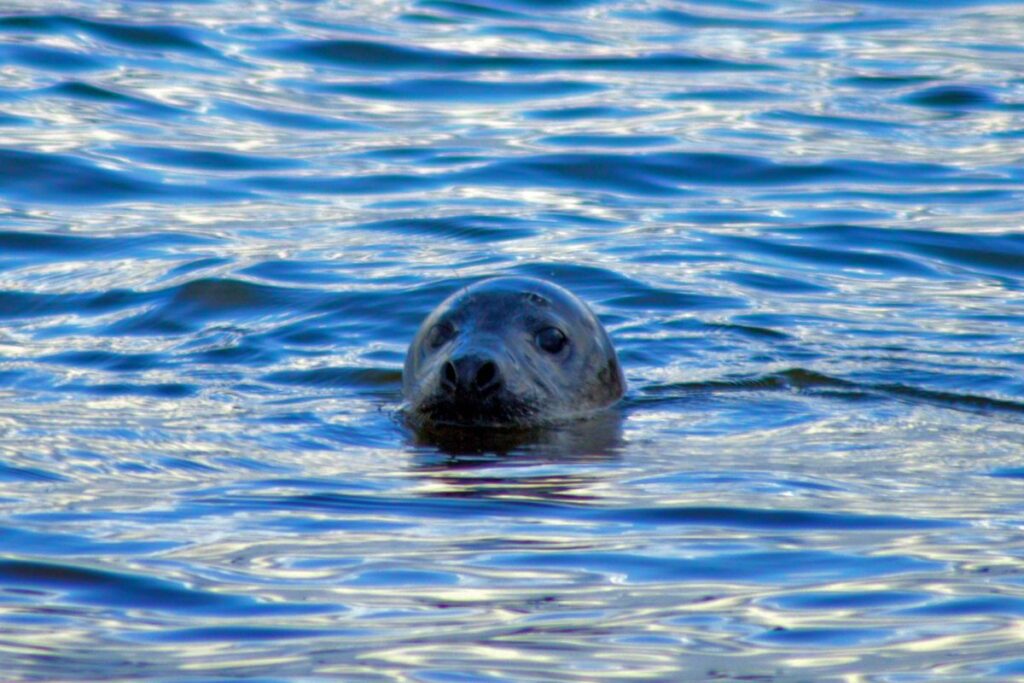
Marine Animal Migration – Frequently Asked Questions
Why do marine animals migrate?
Most animals migrate to find food, breed or give birth, avoid predators, and seek warmer or cooler waters.
How do marine animals know where to go?
Through a combination of magnetic fields, sea surface temperature and salinity cues, celestial navigation, memory and learned behaviour, and chemical cues.
How do scientists track marine animal migrations?
Researchers use different methods and technologies including satellite tags, GPS trackers, acoustic tags, photo identification, drones and aerial surveys, and citizen science sightings.
Are all marine animals migratory?
No. Some marine species are resident and stay in the same area year-round, especially those living in stable, resource-rich environments. However, many large marine species are at least partially migratory, moving in response to seasonal or life cycle needs.
What are some examples of well-known marine migrations?
Humpback whales migrate between polar feeding ground and tropical breeding sites. Salmon migrate from the ocean back to the freshwater rivers where they were born.
